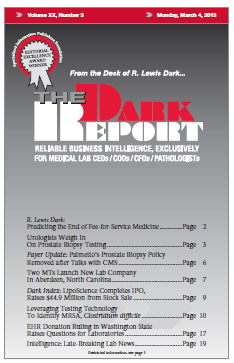CEO SUMMARY: Probably the most challenging infections for hospitals to control and reduce are methicillin-resistant Staphylococcus aureus (MRSA) and Clostridium difficile (C. diff). The laboratory at one New York hospital introduced algorithms to screen for the presence of each infection. In the past five years, the hospital not only cut costs by almost $3 million …
Leveraging Testing Technology To Identify MRSA, C. Difficile Read More »
To access this post, you must purchase The Dark Report.


